Picking a makeup foundation for your dark skin type can be a challenge because there are just various formulas and shades to pick from.
Let’s face it, without knowing what your skin type is; you can never get your makeup right. This is the essential detail that changes what your makeup outcome is.
You can either get a flawless complexion or the complete opposite with your makeup choice. That is why you have to do a little bit of research when it comes to picking foundations for dark skin types.
To help you make the right choices, these are pointer to help you choose the best foundations for dark skin types.
How to Choose a Foundation for Dark Skin
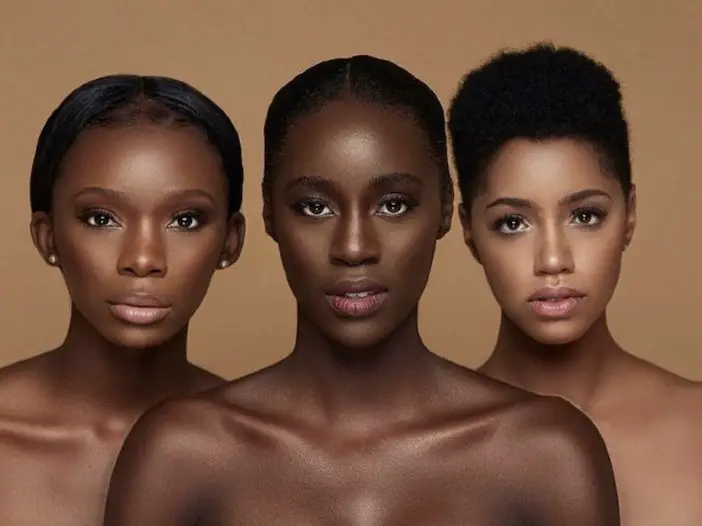
1. Search for Skin Type
This is the first thing you have to know when searching for a foundation for dark skin. If you know your skin type you are well on your way to getting the perfect foundation. Skin types are mostly categorized into oily, dry, combination, and natural, sensitive skin types.
Oily skin type
Having oily skin means your pores are wider and sebum is excess in the pores. The skin type is mostly characterized by frequent acne and breakout.
It needs to be hydrated and dry because the excess sebum makes the skin surface shiny and greasy. People with this type of skin need to use matte foundations.
Not only that, they need to use pre-foundation products like oil control primer to boost the matte formula of the foundation and help it stick to the face without smearing.
The foundation should also be powder or water-based and oil-free foundations. Mineral foundations are also a good option because their dry particles absorb the moisture on the face and keep it from shining.
A good foundation for oily skin type is Phoera Firstfly Matte Oil Control Foundation Cream. It offers a matte finish and is also waterproof. It also contains sunscreen with an SPF of 50, which means total coverage and protection.
You won’t have to worry about it smearing because it is matte and sticks to the skin.
Dry skin type
When choosing a foundation for dark skin types with dry skin, you have to be careful with them because they are also sensitive, especially during winter or cold seasons. They are characterized by flaking and cracking skins.
The pores are too tight for moisture to seep in. Usually, after washing, the dry skin feels tight and could flake especially around the T-zone (forehead, nose, and chin) area.
Dry skin types need lots of moisture, so before putting your foundation on, pre-makeup routines that give the face lots of moisture need to be observed. This way, your skin will continue to stay moisturized under the foundation.
It could be a hydrating mask, a moisturizing primer, or oil-based bases. Oil-based foundations are also ideal for this type of skin.
Dry skin types need to stay moisturized. That is why you should try Maybelline Fit Me Dewy and Smooth foundation. It has a sheer finish that would keep dry skin glowing and smooth. It also provides full coverage to the face, hiding spots, and patches on the face.
SEE: From Natural to Shiny: Best Foundations for Dark Skin
Combination skin type
Combination skin types have two different skin types; oily skin which is around the T-zone area and dry skin which is mostly around the cheeks. Combination skin is the most common of the skin types.
They are also the type of skin to change during seasons. In warm seasons, the skin is oilier and in cold seasons the skin is normal or dry and flaky.
This means your formulas change with the seasons too. But combination skin types should wear oil-free or little oil-based foundations. The trick is to avoid putting the oil-based foundation in areas where you mostly get breakouts.
If you are a combination skin type, you can use Revlon liquid foundation with a matte finish. It offers full coverage and can last for up to 24 hours.
Normal skin type
These skin types are in the middle. They have little to no skin imperfections. When it comes to using the right foundation for dark skin types, normal skins are influenced by the environment and season.
If it is a warm season and their skin is oily, they should go for water-based matte foundations. And if it is during the cooler season and their skin is dry, they should opt for oil-based foundations.
Frankie Rose Matte Perfection foundation is great for all skin types which makes it perfect for normal skin because they won’t have to change formula every season change.
Sensitive skin type
Sensitive skins are easily irritated. It is best to stay away from foundations or makeup products in general that are heavily fragranced or thick in texture.
You can use a foundation with mineral materials like zinc that soothes the skin. The mineral formulas also cover redness or discoloration of the skin.
Covergirl’s Clean Sensitive Skin foundation is also a matte finish that is fragrance-free and oil-free. It has been dermatologically tested and it is a lightweight formula on the face.
2. Pick a Shade
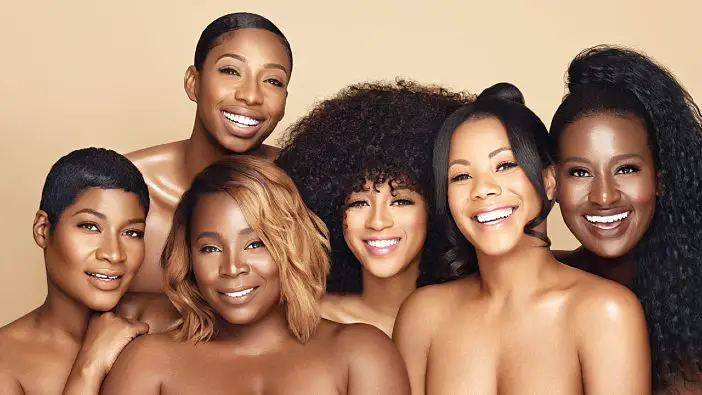
Now that you have figured out your skin type, you have to find the right shade. How do you do this?
Simple.
You test the foundation on your body. What most people do is test the makeup on their wrist or hands. Those places are quite deceiving and you could get a different shade. The best place to test your shade is on your neck or jawline.
Take a bit of foundation and swatch on your jawline. If it blends easily into your skin color around your neck, then it is the right shade for you. If it leaves a whitish or flaky effect on your skin or makes your skin looks darker than normal, then it is the wrong shade for you.
Another thing you have to know about dark skins is that there isn’t one shade on our body so you can mix and match foundations to get what you desire.
You could also have different foundations for the summer and winter seasons. This is because your skin tone will differ in both seasons. So having the right shade or hue for the right season is a bonus.
If you are still in doubt about the right shade, you can consult an expert to give you a guide on what to use. Like we like to rephrase when in doubt, seek out.
3. Find Your Skin Undertone
Another way to find the right foundations for dark skin is to know your undertone. Skin undertone simply refers to the hue that comes from underneath your skin’s surface.
This hidden color is what sets the tone for your skin. There are three skin undertone categories which are cool, warm, and neutral.
Cool undertones are characterized by reddish or rosy hues, while warm undertones are characterized by olive or golden hues. Neutral skin undertones are balanced in-between a red and golden hue.
There are ways to test and find your undertones. The first is by simply checking the veins in your wrist. If your veins look deep purple or bluish, you have a cool skin undertone.
If your veins are greenish, then you have a warm skin undertone. And if you cannot determine the dominant color, you are neutral.
Another way to get your skin undertone is by the white sheet test. This involves taking a white sheet of paper and holding it against your face in broad daylight. If what comes out from your undertone is yellowish golden, then you are warm.
If you look reddish against the white contrast, then you are cool. And if there is no bright or dominant color, then you are neutral.
Then you can just swatch the foundation on your jawline and compare the foundation to your neck and your face. When it blends easily with your neckline, then the shade is yours.
SEE: Makeup Tips for Dark Skin Tones
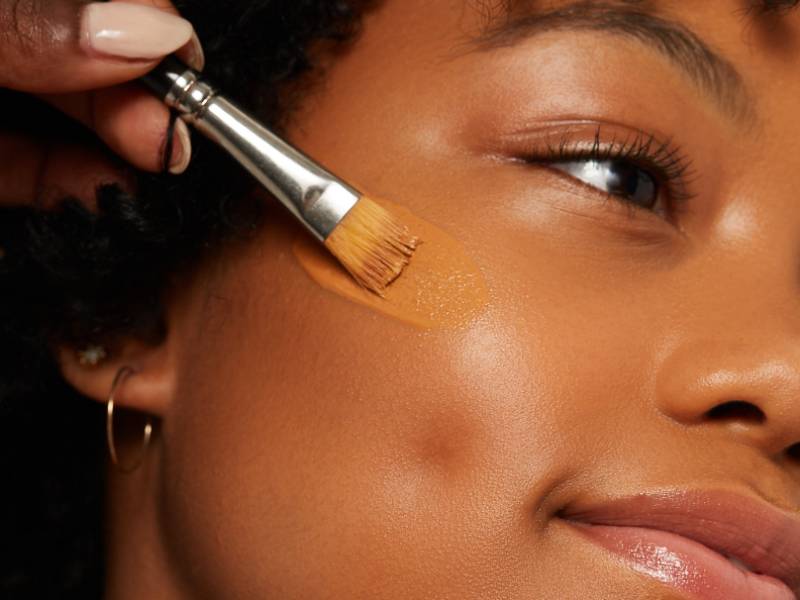
4. Identify a Suitable Finish
If you are a makeup novice, you might be a little confused by what we mean by ‘finish’. A finish is just how you want your foundation formula to look after applying it. This has to do with whether you want a dew, matte, semi-matte, or luminous effect.
When it comes to dewy and luminous effects, your foundation will be creamy and shining. If you are using a dewy or glowing foundation, the other makeup colors you would use should be toned down. Make sure to go for non-shining eyeshadow or lipstick. You can opt for this if you are a dry skin type.
While for matte finish foundations, blending the foundation in will give a perfect finish. You can use a sponge or a foundation brush to get to the corners of your face to get total coverage. It is great for combination and oily skin types.
SEE: How to Apply Foundation With a Brush [Step-By-Step Guide]
Frequently Asked Questions
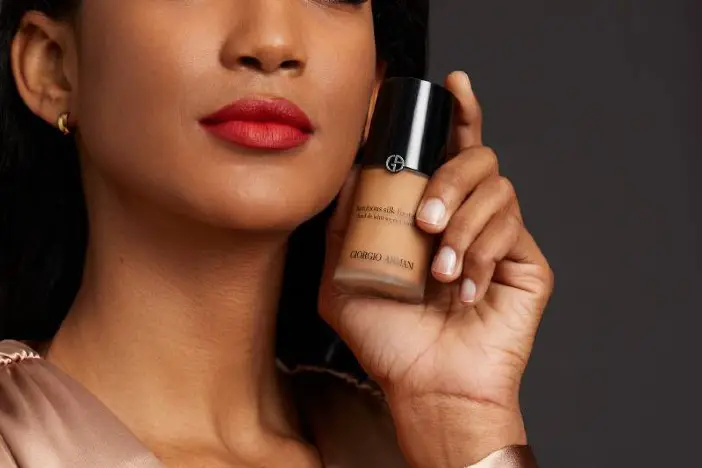
Can you use a foundation without an undertone?
Yes, you can. You can use a foundation that does not have a specified undertone. However, choose a shade as close to your complexion as possible.
You can also choose a foundation with an undertone if it is buildable coverage. Then you can build the coverage and control the pigment on your face.
Does foundation expire?
Yes, it does. Foundation does expire. Although foundations do not have a specified expiration date, they do go bad. You can tell a foundation is bad when the texture is inconsistent or it has lost its smell.
Furthermore, cosmetic products have a period after opening. This is the speculated time your product is usable. It usually starts counting after the product has been exposed to hair.
The PAO signified with numbers like 12M, 6M, 18M with the number signifying the period of months and the M signifying months.
How do you choose foundation for dark skin online?
You can choose by looking at the shades. The foundation shade description should be close to your skin tone. You can also view the color chart and reviews to see if the colors come as shown on the screen.
Conclusion
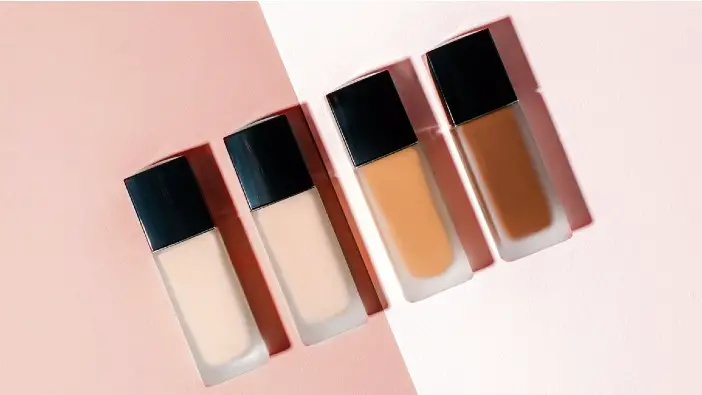
When it comes to choosing a foundation for dark skin you have to ask yourself what your skin type is and also the hue of your skin’s undertone. When you have an idea of what they are you can choose the right shade you want.
Getting your right shade is all about patience and testing the foundation on your jawline and not your hands as it is popularly believed.
One thing about dark skins is the skin not having one shade. There are different shades on the skin so you might have to mix and match to get your right hue. It is all about trying new things out.
Africana Fashion will guide you with beauty articles to help build your confidence in your beauty.












